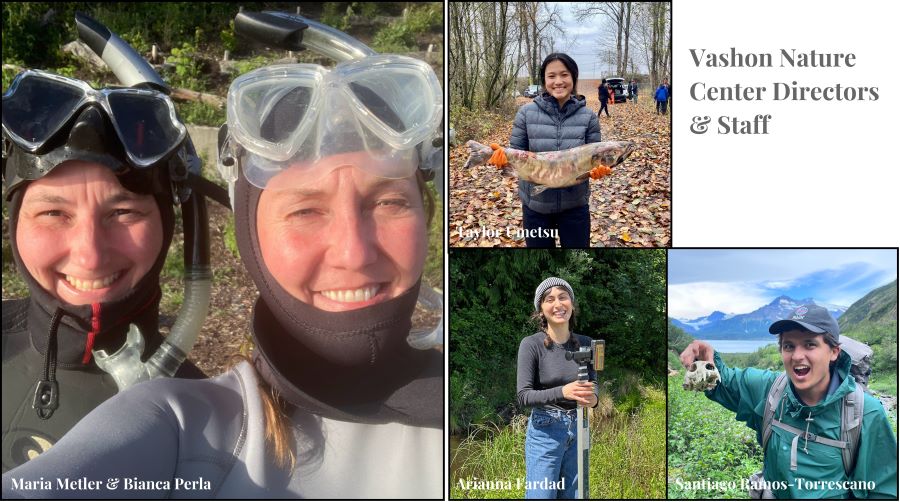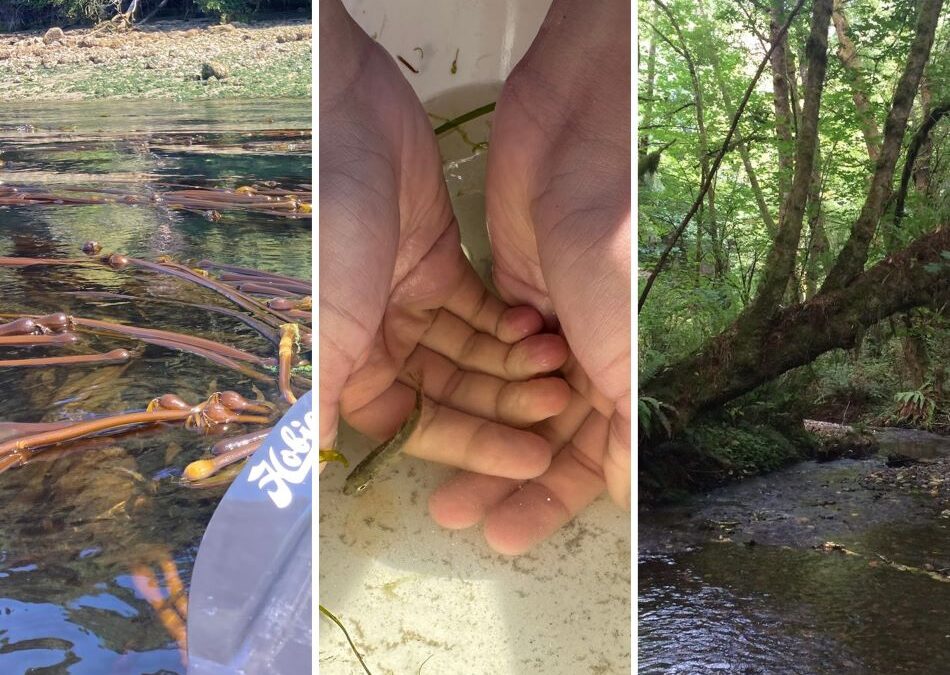The following is a written version of a recent talk that Science Director Bianca Perla gave about the origins and concepts behind Vashon Nature Center’s vision, mission, and programs.
Vashon Nature Center was founded on a question: how do we heal the divide between humans and nature that is hurting us in so many ways?
I started thinking about this question during my doctoral studies when I read a controversial paper titled “The Death of Environmentalism” by Michael Shellenberger and Ted Nordhaus. It stated that the environmental movement was no longer relevant. It could not deal with the challenges posed by global climate change. And the main reason for this was that we were separating people from nature and creating policies and actions that furthered this divide.
I had problems with the paper, but I resonated with the main point because I was finding similarities in my doctoral research on parks and protected areas– protecting land had benefits but was not sufficient, and sometimes removing people from the system created a separation that hurt both humans and nature and these were real effects that you could see on the ground.
Prior to my doctorate, I worked as an environmental educator in Yosemite. We taught kids all about the importance of protecting the environment. I was initially excited. But, then I started to question some things. When I asked kids what they learned from our programs they replied: don’t litter, don’t step on the flowers in the alpine meadows, conserve water, use less electricity. All of those things are good to learn, but I found myself wondering, should they really be the primary point? Is that what you should take away from visiting Yosemite? What message were we sending when our primary purpose for environmental legislation, education, and outreach was– protect nature and nothing else? Because that begs the question: protect it from what? And the obvious conclusion is, from ourselves. And that’s where the hurtful divide begins.
Reflecting on my experience growing up on Vashon eventually led me to the idea: what if there was a nature organization added to the mix that focused on connection rather than protection?
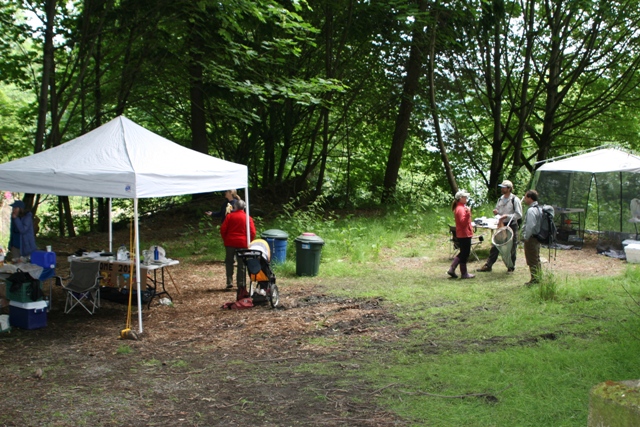
So, Vashon Nature Center was born as a living, evolving and collective attempt to create a culture of connection with nature. At the suggestion of Jeff Adams, we held our founding event, the first 24 hour Bioblitz survey on Vashon. And the response was incredible. So many people came out of the woodwork of all ages to explore and notice all the life we could find in one full day. I was impressed by the amount of naturalist expertise we had on Vashon-people had been paying attention to nature here for a long time, the sense of community that developed was powerful and sweet and the feeling of reverence and wonder everyone had for the organisms we found was palpable. This event is where Maria and I met and we’ve never looked back!
Bioblitz gave us our first ingredient in our recipe for connection at VNC: wonder.
We value it tremendously. When we incorporated as a nonprofit in 2018 it became our vision: a world awakened to the wonders of nature. Wonder may seem a strange and rather inconsequential thing to base a vision on but it is not, it is very strategic. Wonder transports us out of isolation, fear, guilt. These emotions, studies show, are what most standard environmental teaching, media, and campaigning strategies make people feel even if they don’t intend to. Instead, focusing on wonder connects you with a world larger than yourself. And, it connects you into a community. When you feel wonder, you want to share it with the person next to you, whoever they are. It’s a pro-active state of mind.
Take for example those whale bones outside. You have learned a lot about whales today. But, what did you feel when you saw his humongous skeleton out there? Over the last 6 months, our adult whale ambassador volunteers visited this whale every week witnessing his decomposition. It’s impossible to look at whales, or the cycle of life and death the same ever again after an experience like that. One of the Student Link students helping us set up the whale yesterday paused in his work organizing the bones and asked softly, “I wonder if he was sad when he died?” Every one of our staff and plenty of our volunteers have had tears in their eyes for this whale at some point during this process. Wonder is not always light and fluffy, it can be very poignant sometimes.
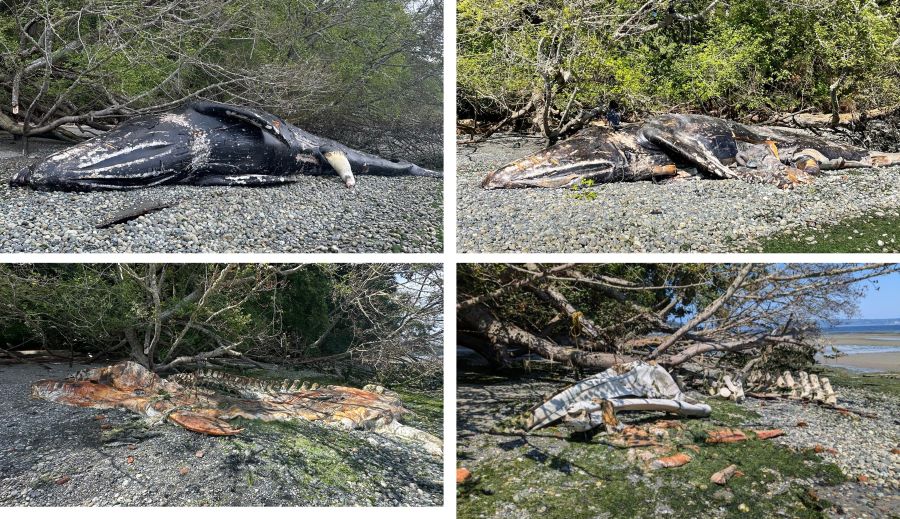
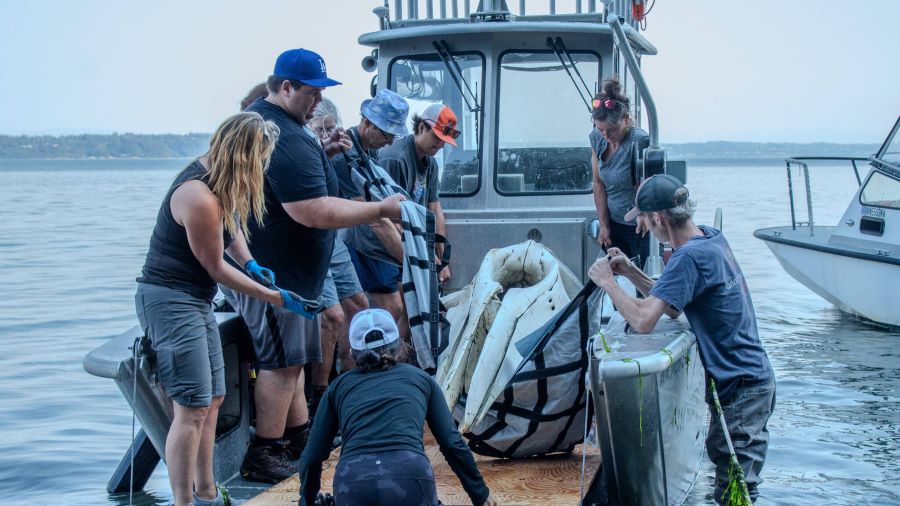
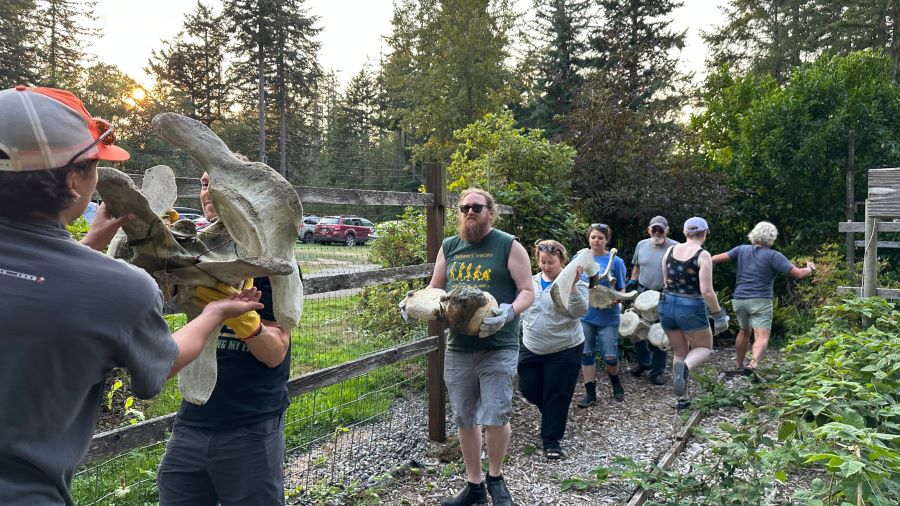

Nature’s surprises like this whale are not things that can be planned and budgeted for in advance. But we pursue them anyway because they offer powerful ingredients in developing a deep connection with life.
Transformative experiences are our second ingredient. Our mission is to create transformative nature experiences through community science, research and education for the benefit of our island home and the entire Salish Sea. We work for transformation on many levels from individual, to organizational, to cultural. And we aim for this for our staff too, not just program participants. Transformation is not accomplished in a one and done afternoon workshop. Transformation takes time and is accomplished in community. For example, many visits over the years to the same stream for our Salmonwatch volunteers, years of programs that build on each other through our youth education programs.
Last May we were on the north end beach and Santiago had just gone through the Best Beach Behavior pledge. We divided 1st grade students into groups with their high school leaders, most of whom remember coming here as 1st graders themselves many years ago. They set off. The first graders run everywhere finding sea anemones, scream-laughing when they get squirted by clams, exclaiming over a huge moonsnail. The high school students struggle to keep up and keep them corralled. But, as the minutes pass I can see the change in the stoic teens. They start unfurling as the little tiny hands and feet and voices of the 1st graders pull out that long forgotten curious child inside. As they guide these little crazy humans along the beach they remember a part of themselves that our society does not prioritize, and they experience giving back to their community by being guides for a younger generation. Learning to give back is an essential part of a healthy relationship with nature.
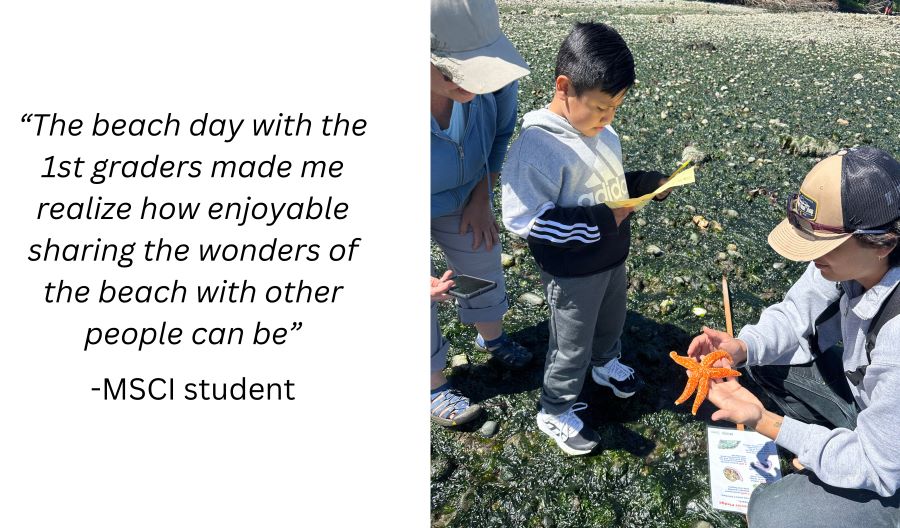
Our supportive and mentorship based approach is transforming students’ relationship with nature on an individual level throughout their school career. It’s also transforming the school. We help administrators and teachers make space for nature connection and value it as an essential part of standard education which is not easy to do in our traditional school system where even willing teachers experience many barriers. VNC staff are a continuous presence in the lives of our local public school children. We see them as 1st graders, 2nd, 4th, 5th, 6th, 9th, and then they have increasing opportunities to work with us in 10-12th as students and interns. Once part of the VNC community no matter what age, you are supported and always welcome no matter where you go.

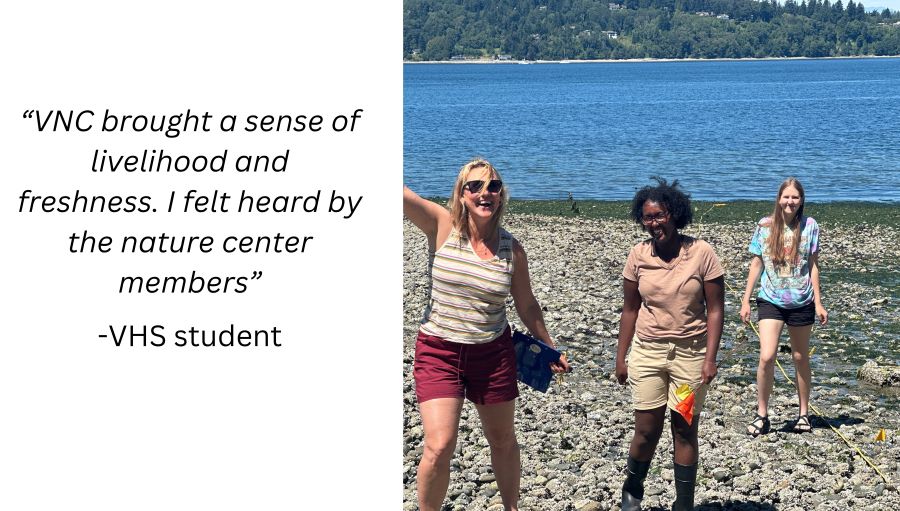
This brings us to the last ingredient I will talk about today– roots and wings. We exist at VNC to heal the rift between humans and the environment. We are now at the point in our development where deep local roots are giving rise to wings that connect our work to the larger Salish Sea community and beyond.
For example, we provide early career experiences to support future environmental practitioners. Every summer we host a research team composed of high school and college interns and early career scientists who act as mentors. We hosted our first international intern this summer. The island benefits immensely from the presence of these young professionals and they in turn learn valuable lessons and skills to apply to their careers in all places around the globe. They become our wings.
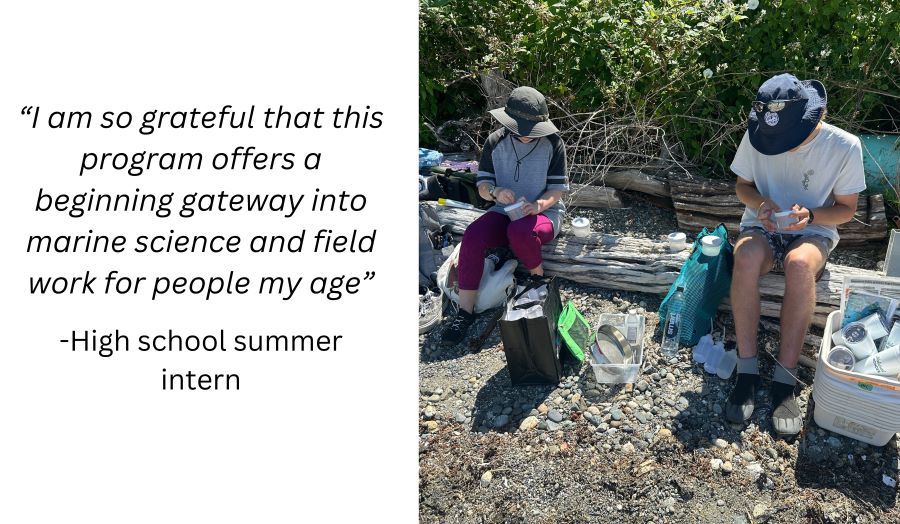
Data collected by adult and student volunteers on forage fish, salmon, kelp, marine birds, beach restoration, are integrated directly into the Puget Sound Vital signs. These are regional vital signs created by the Puget Sound Partnership and they directly inform state-wide environmental policies that improve stewardship of our state’s habitat and wildlife. We sit on multiple regional workgroups for different Vital signs to ensure that our data remains valuable and relevant and that our input is heard. And, we are collecting critical data on baseline conditions on the island that can be used to inform local stewardship and measure change through time.
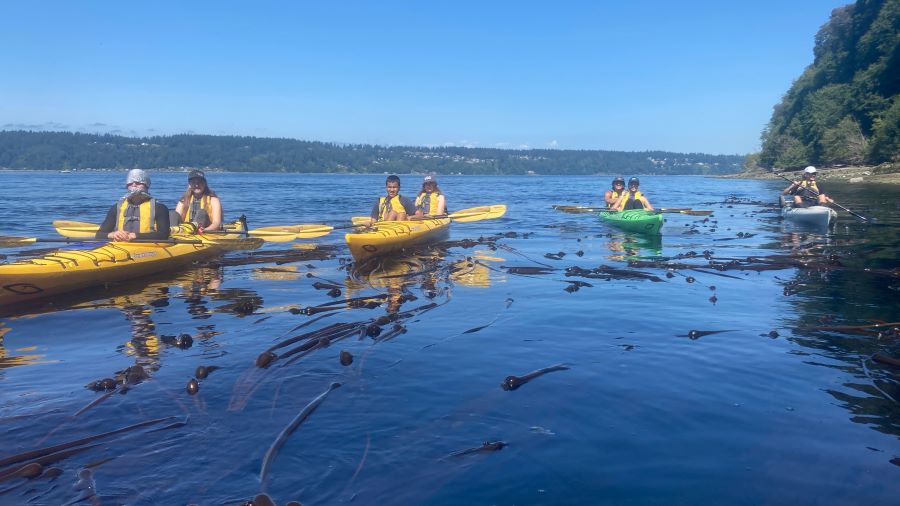
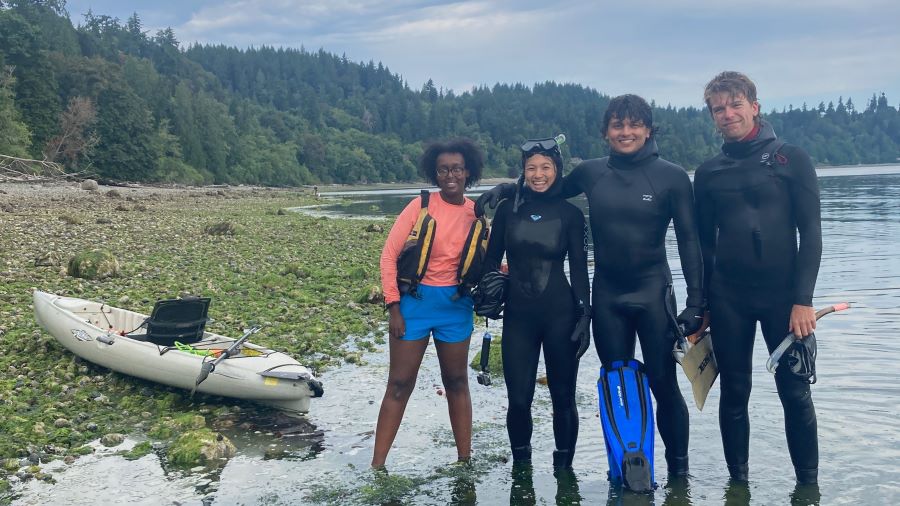
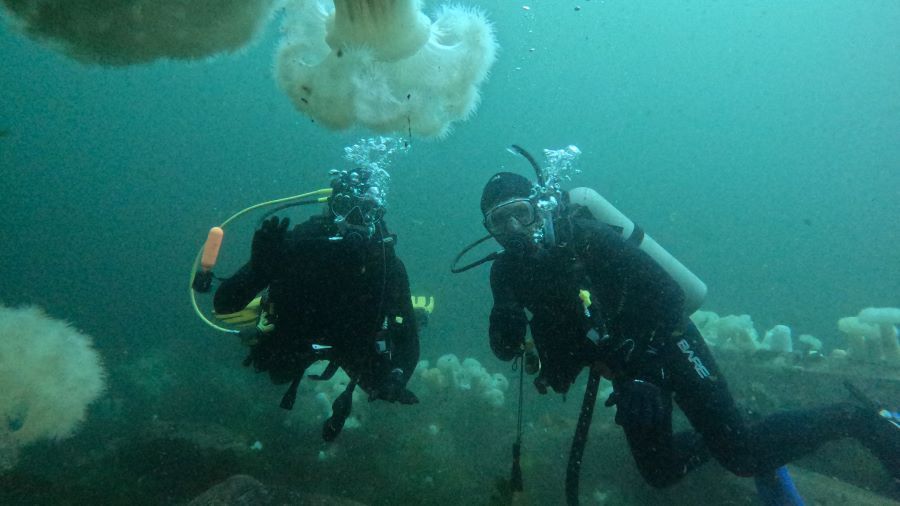
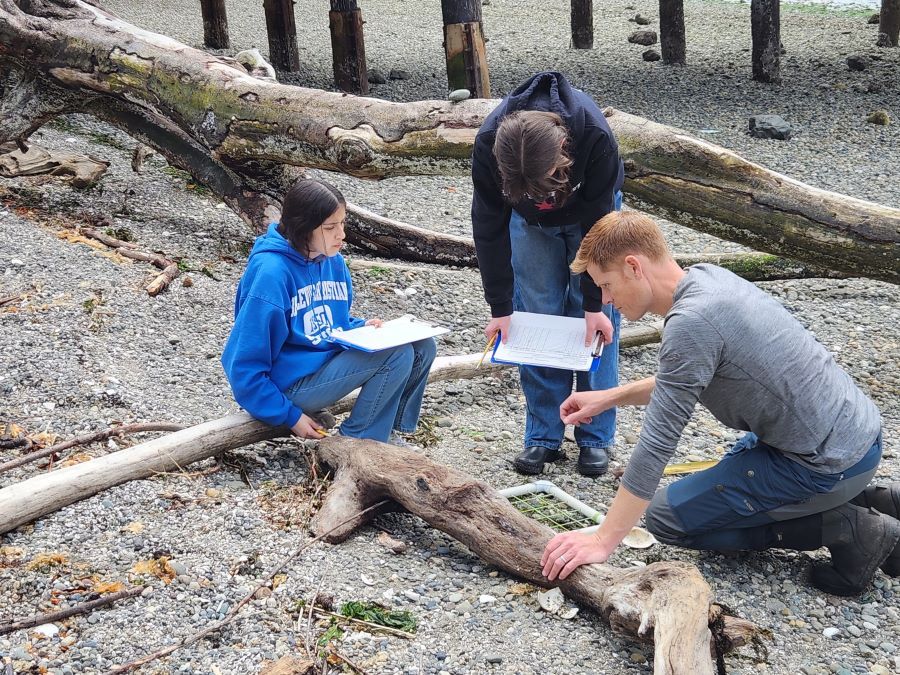
Adult and student volunteers take data that is directly used to improve stewardship of habitats and wildlife on local, regional, and international scales.
Partnerships with 54 local and regional groups are also crucial in connecting our work beyond island shores. We are embarking on a new project in October with partners at UW and the Canadian Hakai institute to take eDNA samples of marine water in Quartermaster. Locally, this will give us crucial information about fish, including our imperiled herring run in Quartermaster, that will help us restore these important fish. This info will also benefit an international database tracking biodiversity throughout the Salish Sea. It’s on our website, volunteer!
We learn a lot from our partnerships as well. Three years ago, we started working with off island partners from Sea Potential and HipHop is Green to bring BIPOC urban youth to Vashon beaches. And, this is a two way street. This fall we are taking island kids over to the mainland to participate in a climate symposium at UW led by Hip Hop is Green. Savannah and Ebony, co-directors at Sea Potential. were part of the inspiration in our decision to change the traditional system of leadership and run Vashon Nature Center as a co-directorship.
We now have two Puyallup Tribe members on our Advisory committee in recognition that there are many lessons to be learned from the First People here about healing the rift between humans and nature and living in a beneficial relationship with the natural world. This year we are working with the school district and Puyallup tribe to create a curriculum around plants and animals depicted in the new mural of Lucy Gerand on the Chautauqua elementary campus painted by Puyallup tribe member Anthony Duenas.
Dr. Lyla June,a Human Ecologist of Navajo, Cheyenne and European descent, and a fellow Stanford alum says:
“The logical leap that many make is that the earth would be better off without humans. I reject that leap. The earth may be better off without certain systems we’ve created but we are not those systems. What if I told you that we belong here? What if these human hands and minds could be such a great gift to the earth that they spawned new life wherever people and purpose meet?”
I love how she puts this. This is what the Vashon Nature Center community is all about, rising to the level of our human potential in our relationship with nature. It is what each one of you knows in your hearts and why you are here today. All of us believe that as part of nature ourselves, humans can be beneficial. We don’t have to operate within the same old systems that surround us. You are helping Vashon Nature Center build and strengthen community systems that nurture our shared love for nature, that give us opportunities to give back to nature, to revel in it, and to thrive mutually with it.
All of us at Vashon Nature Center feel both privileged and grateful to do this work and to be able to do it with your support. Thank you.
